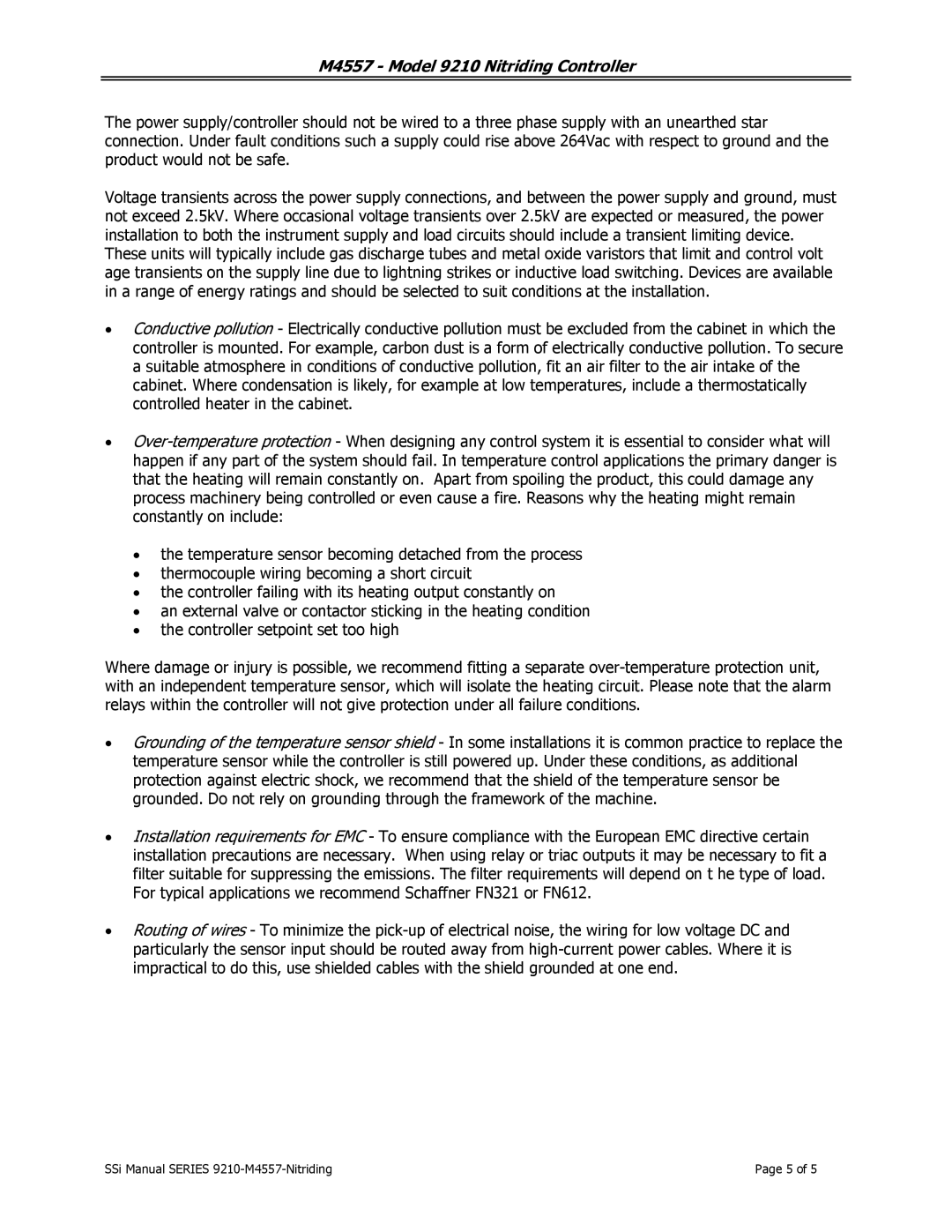M4557 - Model 9210 Nitriding Controller
The power supply/controller should not be wired to a three phase supply with an unearthed star connection. Under fault conditions such a supply could rise above 264Vac with respect to ground and the product would not be safe.
Voltage transients across the power supply connections, and between the power supply and ground, must not exceed 2.5kV. Where occasional voltage transients over 2.5kV are expected or measured, the power installation to both the instrument supply and load circuits should include a transient limiting device. These units will typically include gas discharge tubes and metal oxide varistors that limit and control volt age transients on the supply line due to lightning strikes or inductive load switching. Devices are available in a range of energy ratings and should be selected to suit conditions at the installation.
•Conductive pollution - Electrically conductive pollution must be excluded from the cabinet in which the controller is mounted. For example, carbon dust is a form of electrically conductive pollution. To secure a suitable atmosphere in conditions of conductive pollution, fit an air filter to the air intake of the cabinet. Where condensation is likely, for example at low temperatures, include a thermostatically controlled heater in the cabinet.
•
•the temperature sensor becoming detached from the process
•thermocouple wiring becoming a short circuit
•the controller failing with its heating output constantly on
•an external valve or contactor sticking in the heating condition
•the controller setpoint set too high
Where damage or injury is possible, we recommend fitting a separate
•Grounding of the temperature sensor shield - In some installations it is common practice to replace the temperature sensor while the controller is still powered up. Under these conditions, as additional protection against electric shock, we recommend that the shield of the temperature sensor be grounded. Do not rely on grounding through the framework of the machine.
•Installation requirements for EMC - To ensure compliance with the European EMC directive certain installation precautions are necessary. When using relay or triac outputs it may be necessary to fit a filter suitable for suppressing the emissions. The filter requirements will depend on t he type of load. For typical applications we recommend Schaffner FN321 or FN612.
•Routing of wires - To minimize the
SSi Manual SERIES | Page 5 of 5 |
